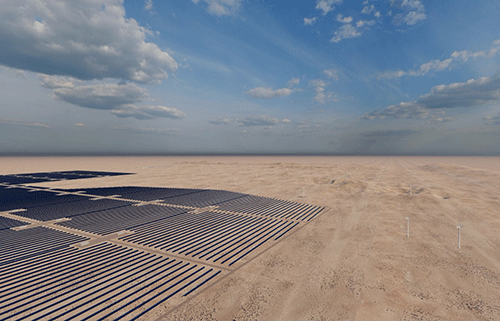While Namibia continues its quest to become one of the world’s leading green hydrogen production hubs, questions linger about the country’s decision to acquire a stake in the vaunted project.
The ambitious green hydrogen project leverages the country’s world-leading wind and solar resources, stable investment climate, underpinned by strong democratic values to carve a niche for itself.
This week the government announced it would exercise its right to take up a 24% equity in the Hyphen Hydrogen Energy project at historical cost.
The investment will be held through SDG Namibia One, a bespoke blended financing infrastructure fund, which will look to raise money from local institutional investors and investors from around the world to develop Namibian green hydrogen projects and related infrastructure.
The establishment of SDG Namibia One will see Namibia’s Environment Investment Fund partnering two Dutch organisations, Climate Fund Managers and Invest International in the establishment of NH2 Fund Managers as the fund manager of SDG Namibia One.
The initial funding of 40 million euros (approximately N$850 million) is being provided as a grant by Invest International and will be housed by the fund.
The European Investment Bank and the government concluded a letter of intent at COP27 for the raising of 500 million euros, a portion of which is set to be designated for investment via SDG Namibia One.
According to the finance ministry spokesperson Wilson Ashikoto, the government recognised the need to strategically mobilise billions of Namibian dollars of funding in a manner that does not place additional fiscal burdens on the country.
“In raising the necessary funding, government has sought partners to assist in its realisation and has developed relationships with the European Union (EU) as a block and member countries, The Netherlands and Germany specifically,” he stated.
Finance minister Iipumbu Shiimi said the step marks yet another key progressive milestone in the development of a local and transformative synthetic fuels sector.
Hyphen CEO Marco Raffinetti noted that government’s taking up of its equity interest in the project and establishing a blending finance fund as innovative as SDG Namibia One is another huge step forward for a country that is ensuring all its people benefit from this project in a sustainable and just way.
Hyphen Hydrogen is a joint venture between Nicholas Holdings and Enertrag South Africa. As the preferred bidder, Hyphen was selected for a 40-year deal to develop Namibia’s US$10 billion green hydrogen project in the Tsau //Khaeb National Park.
“This comes only weeks after Hyphen and the government signed a landmark agreement that will govern how the project will be delivered. I believe Namibia is setting the global benchmark for the development of large scale sustainable green hydrogen projects,” said Raffinetti.
Mixed feelings
However, the news of the government acquiring 24% equity interest in the nascent hydrogen project was received with mixed feelings, especially by analysts and policy makers.
Rally for Democracy and Progress (RDP) president Mike Kavekotora said the government must explain the quantity and qualify the 24% stake they intend to acquire in the green hydrogen project in relation to the resources Namibia has invested in the project.
“The project is a derivative of Namibian resources such as the Namibian sun, Namibian waters and Namibian land. All these are valuable resources of which the project cannot do without. But it seems the Swapo government failed to attach value to these critical resources that count significantly to the viability of the project,” lamented the politician.
He further stated that so-called developed countries must also stop encroaching on Namibia’s resources in similar fashion as was done during the colonial era.
“They owe their development to African resources and those days are gone. Yes, enjoy the ride while it lasts but it won’t be for long. Investors in this project must stop these illicit ways of doing business in Africa and demonstrate a degree of honesty in their dealings. Offer the 24% free to Namibians based on the resources that Namibia offered to make this project viable,” said Kavekotora.
Economist Rowland Brown asked if the green hydrogen is so hot the government should have been able to negotiate a deal with an investor that sees them paying for their use of this resource in the form of carried interest.
Brown is concerned that Namibia does not get the 24% in this deal free, but rather has to buy the stake.
“If we are to help the northern hemisphere solve the climate crisis that they caused, we should at least get something out of it to help solve our socio-economic problems,” tweeted Brown.
CEO of the Namibia Investment Promot ion and Development Board, Nangula Uaandja explained that the government is not forced to take up a share but they chose to do so due to the potential upside of the project.
She tweeted that it is unreasonable to expect a carried interest from an investor.
“There is therefore a need for shared risk between the government and the investor until the market is proven. I believe it is a blessing that Namibia has partners and other mechanism to fund the 24% and not put the treasury funds at risk.
“Main reason green hydrogen is getting a lot of attention is because of the pressure to reach net zero by 2050. The messaging is thus not only driven by Namibians but also by significant interest from potential off-takers who are eyeing it as a solution to the reduction of their carbon footprint,” explained Uaandja.
Moving forward
Hyphen this week signed agreements with the government, Namibian Ports Authority (Namport), NamPower, the Port of Rotterdam (PoR), Gasunie and Invest International to create a partnership to drive the delivery of sub- Saharan Africa’s largest, and only, fully vertically integrated, green hydrogen project.
NamPower and Hyphen are also investigating the possibility of supplying excess electricity generated by the project to NamPower and how this could assist NamPower in improving Namibia’s energy security while simultaneously contributing to the decarbonising of its electricity system.


